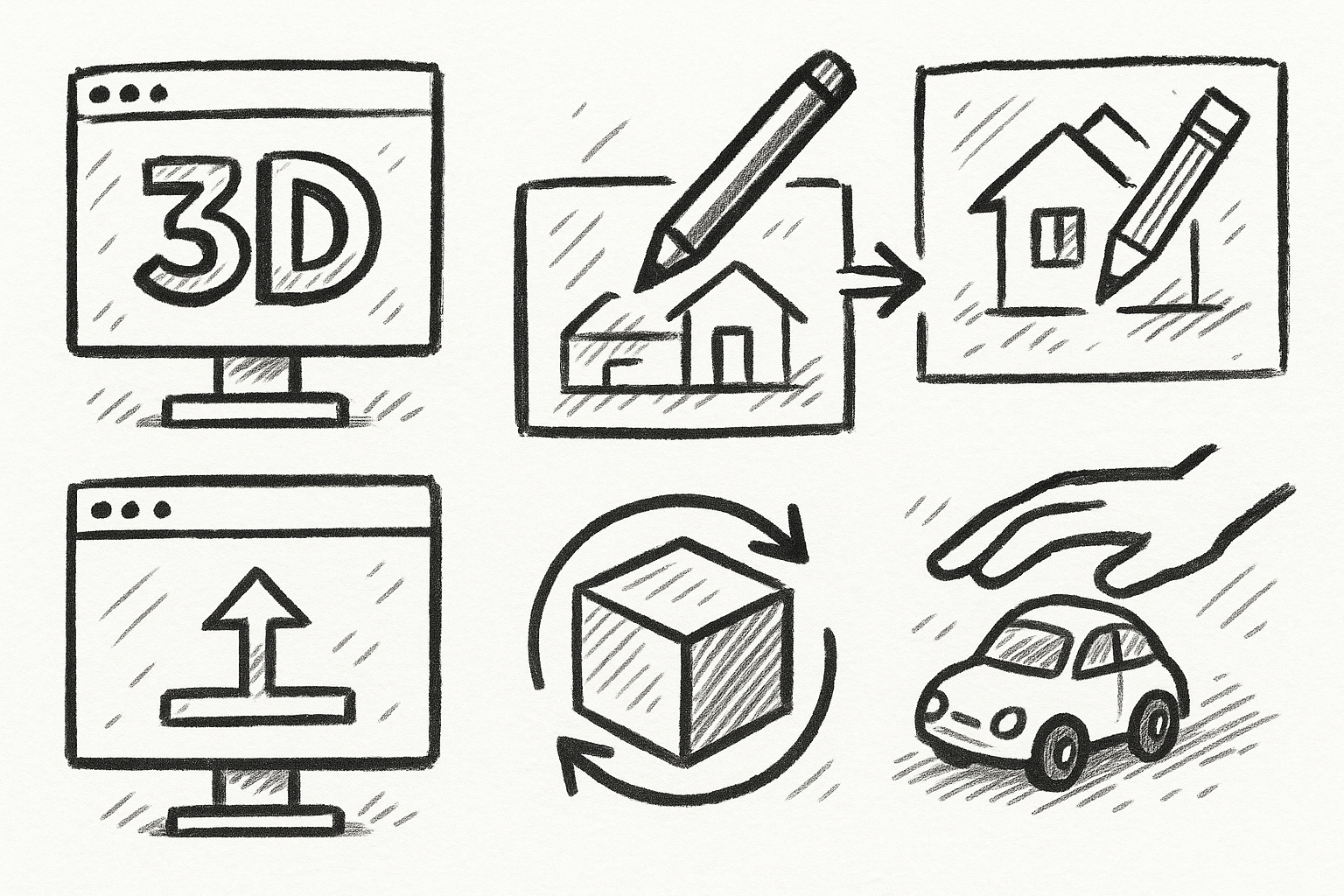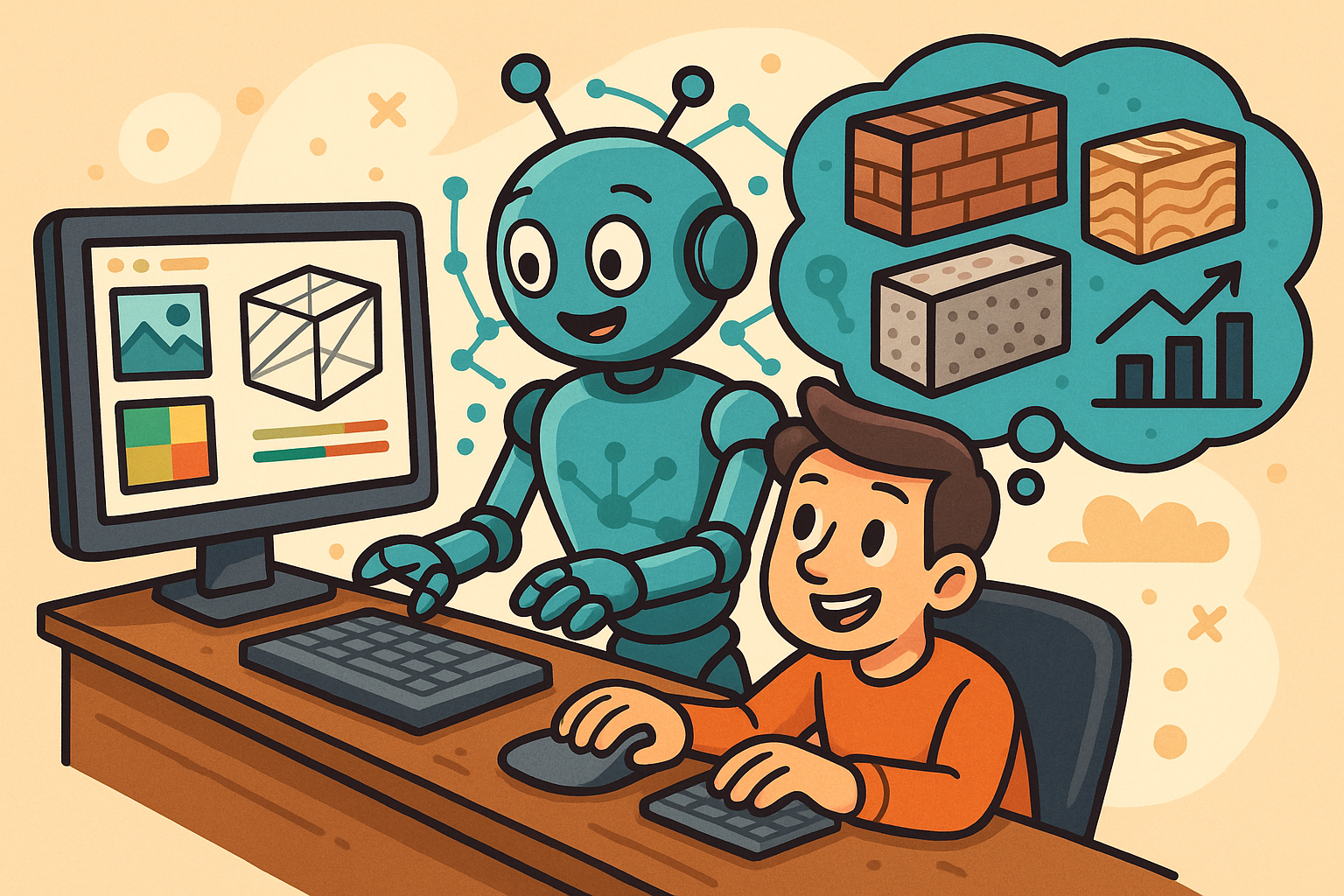Your Cart is Empty
Customer Testimonials
-
"Great customer service. The folks at Novedge were super helpful in navigating a somewhat complicated order including software upgrades and serial numbers in various stages of inactivity. They were friendly and helpful throughout the process.."
Ruben Ruckmark
"Quick & very helpful. We have been using Novedge for years and are very happy with their quick service when we need to make a purchase and excellent support resolving any issues."
Will Woodson
"Scott is the best. He reminds me about subscriptions dates, guides me in the correct direction for updates. He always responds promptly to me. He is literally the reason I continue to work with Novedge and will do so in the future."
Edward Mchugh
"Calvin Lok is “the man”. After my purchase of Sketchup 2021, he called me and provided step-by-step instructions to ease me through difficulties I was having with the setup of my new software."
Mike Borzage
Design Software History: Design Software's Role in Shaping Industry 4.0: Evolution and Future Trends
November 06, 2024 5 min read


Introduction to Industry 4.0
Industry 4.0 symbolizes the dawn of a new era in the industrial sector, marked by the seamless integration of digital technologies into manufacturing and production processes. It represents the fourth industrial revolution, building upon the advancements of the previous three: mechanization, electrification, and the advent of computers and automation. The essence of Industry 4.0 lies in the emergence of smart manufacturing and the expansive implementation of the Internet of Things (IoT). These developments enable machines and devices to communicate and cooperate with each other and with humans in real-time through the internet. This connectivity results in systems that can make decentralized decisions, enhancing efficiency and flexibility in manufacturing processes. The convergence of physical and digital systems, often referred to as cyber-physical systems, has been accelerating due to advancements in sensor technology, big data analytics, and artificial intelligence. Industry pioneers like Klaus Schwab, Chairman of the World Economic Forum, have emphasized that this revolution is fundamentally changing the way we live, work, and relate to one another. Leading companies such as Siemens AG and General Electric have been instrumental in implementing Industry 4.0 principles, integrating digital twins and data analytics into their operations to optimize performance and predict maintenance needs. Key drivers propelling Industry 4.0 include:- Automation: Advancements in robotics and control systems allow for automated processes that enhance efficiency and reduce human error.
- Data Exchange: Increased connectivity facilitates the collection and analysis of vast amounts of data, leading to informed decision-making.
- Advanced Technologies: Innovations in AI, machine learning, and IoT devices are transforming traditional manufacturing into intelligent operations.
Evolution of Design Software in an Industrial Context
The journey of design software within industrial contexts has been a critical factor in the evolution of manufacturing and engineering practices. Historically, design processes were manual, relying heavily on draftsmen and engineers using pen and paper to create technical drawings. The introduction of Computer-Aided Design (CAD) in the 1960s marked a significant shift toward digitization. Early adopters like Patrick J. Hanratty, often considered the "Father of CAD," developed PRONTO, the first commercial numerical control programming system, laying the groundwork for future developments. Throughout the 1980s and 1990s, companies like Autodesk, founded by John Walker, revolutionized design with AutoCAD, making digital design tools accessible to a broader audience. Similarly, Dassault Systèmes introduced CATIA, which became a cornerstone in aerospace and automotive design. As we progress into the era of Industry 4.0, design software has undergone transformative advancements, integrating Artificial Intelligence (AI) and machine learning algorithms to optimize designs and automate routine tasks. Modern design software now offers generative design capabilities, where the software generates optimal design solutions based on specified constraints and requirements. Pioneering tools like Autodesk's Fusion 360 allow engineers to explore thousands of design permutations to find the most efficient structures. The utilization of cloud computing has further expanded the accessibility and collaborative potential of design software. Cloud-based platforms like Onshape provide real-time collaboration features, enabling teams in different locations to work simultaneously on the same models. This shift not only enhances productivity but also accelerates innovation cycles. Real-time data analytics have become integral to improving design workflows. By incorporating feedback from sensors and IoT devices, design software can adapt and iterate designs based on actual performance data. Companies like PTC have integrated their design software with IoT platforms, enabling a continuous feedback loop between the product in use and the design team. This integration supports predictive maintenance and informs future design improvements, enhancing the overall product lifecycle.Applications of Design Software in Industry 4.0
Within the framework of Industry 4.0, design software applications have become indispensable tools across various industries, leading to significant improvements in efficiency, productivity, and innovation. Key applications include:- Aerospace Industry: Utilizing advanced design tools to optimize component shapes and materials for weight reduction and performance enhancement. Companies like Boeing and Airbus employ software that integrates simulation and real-time data to refine designs continuously.
- Automotive Industry: Using simulation tools to streamline production processes, reducing the need for physical prototypes. Automotive leaders such as Tesla and BMW leverage design software to simulate crash tests and aerodynamic performance, accelerating development cycles.
- Consumer Goods Market: Employing rapid prototyping facilitated by design software to shorten design cycles and accelerate time-to-market. Firms like Procter & Gamble utilize 3D printing technologies integrated with CAD software for quick iteration on product designs.
Future Trends and Implications for Design Software
Looking ahead, Industry 4.0 is expected to continue shaping the progression of design software, emphasizing the need for systems that are more intelligent, adaptive, and integrated with emerging technologies. Predicted future trends include:- Increased Use of Generative Design: Leveraging AI and machine learning to autonomously generate optimized designs. This approach accelerates the design process and uncovers innovative solutions beyond human imagination.
- Integration of Virtual and Augmented Reality: Enhancing product visualization through immersive experiences. Companies are developing platforms that allow designers to interact with virtual prototypes in real-time, improving understanding and communication.
- Emphasis on Cybersecurity and Interoperability: Addressing challenges associated with interconnected systems and data security. As design software becomes more integrated, ensuring secure data exchange and compatibility across platforms is crucial.
Conclusion
In summary, the evolution of design software is intricately linked to the advancements of Industry 4.0, playing a pivotal role in transforming manufacturing and engineering practices. The integration of advanced technologies such as AI, cloud computing, and VR/AR into design tools has unlocked new possibilities for innovation, efficiency, and collaboration. As industries continue to navigate the complexities of the fourth industrial revolution, the importance of embracing cutting-edge design software cannot be overstated. Continuous innovation in design tools is imperative to meet the evolving demands of modern industries, ensuring that companies remain competitive and sustainable in a rapidly changing global market. Stakeholders are encouraged to actively engage with these technologies, invest in skill development, and foster environments that support experimentation and adoption of new methods. By doing so, they position themselves at the forefront of industry advancements, ready to capitalize on the opportunities presented by Industry 4.0.Also in Design News

5 FormZ Tools Revolutionizing Your Workflow: From Sketch to Prototype with Ease
August 23, 2025 5 min read
Read More
Revolutionizing Design Software: Machine Learning in Material Property Prediction
August 23, 2025 7 min read
Read More
Cinema 4D Tip: Enhancing Workflow with Procedural Textures in Cinema 4D
August 23, 2025 2 min read
Read MoreSubscribe
Sign up to get the latest on sales, new releases and more …


